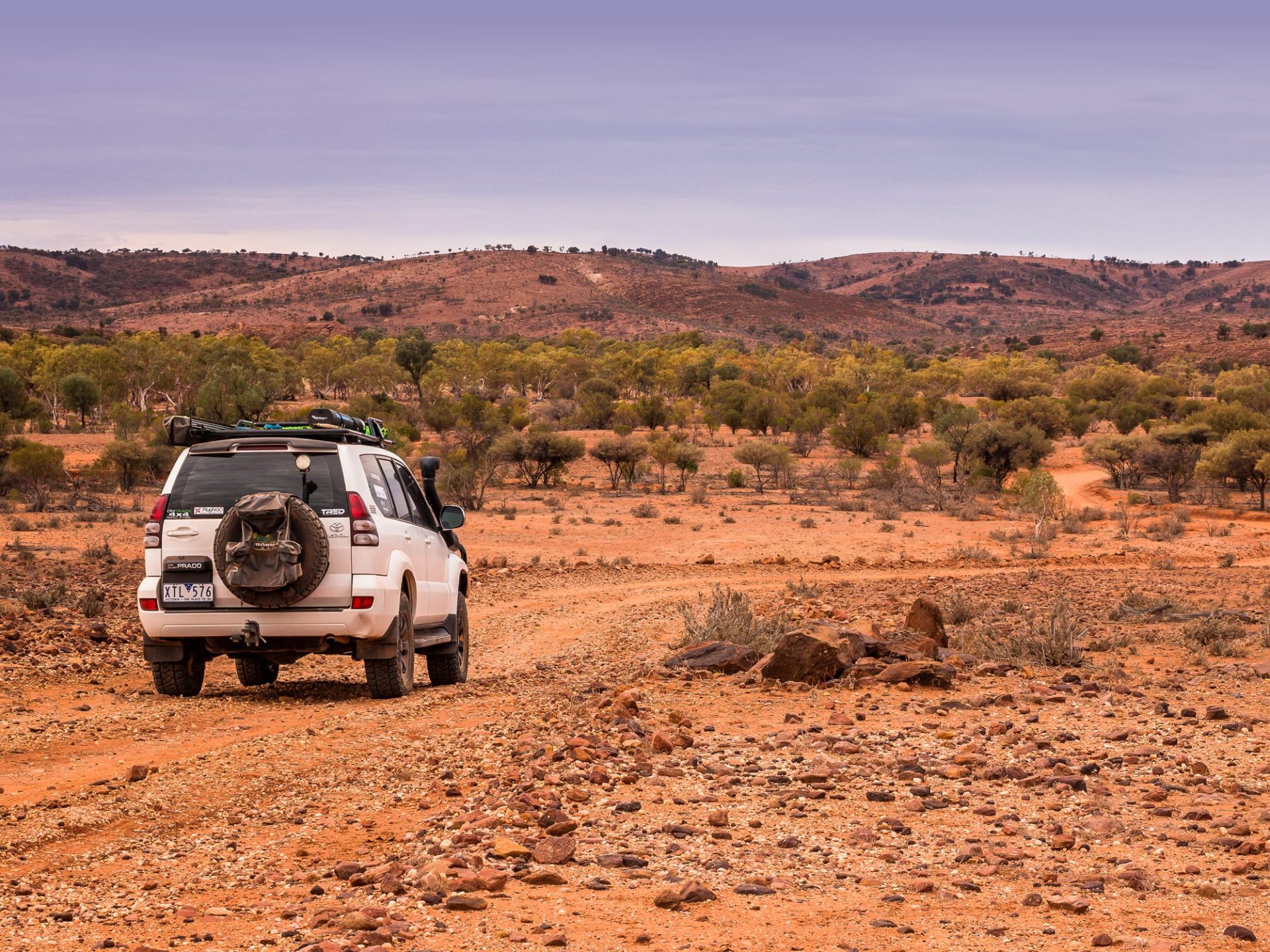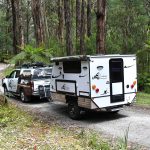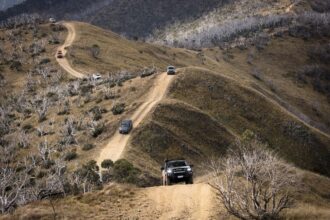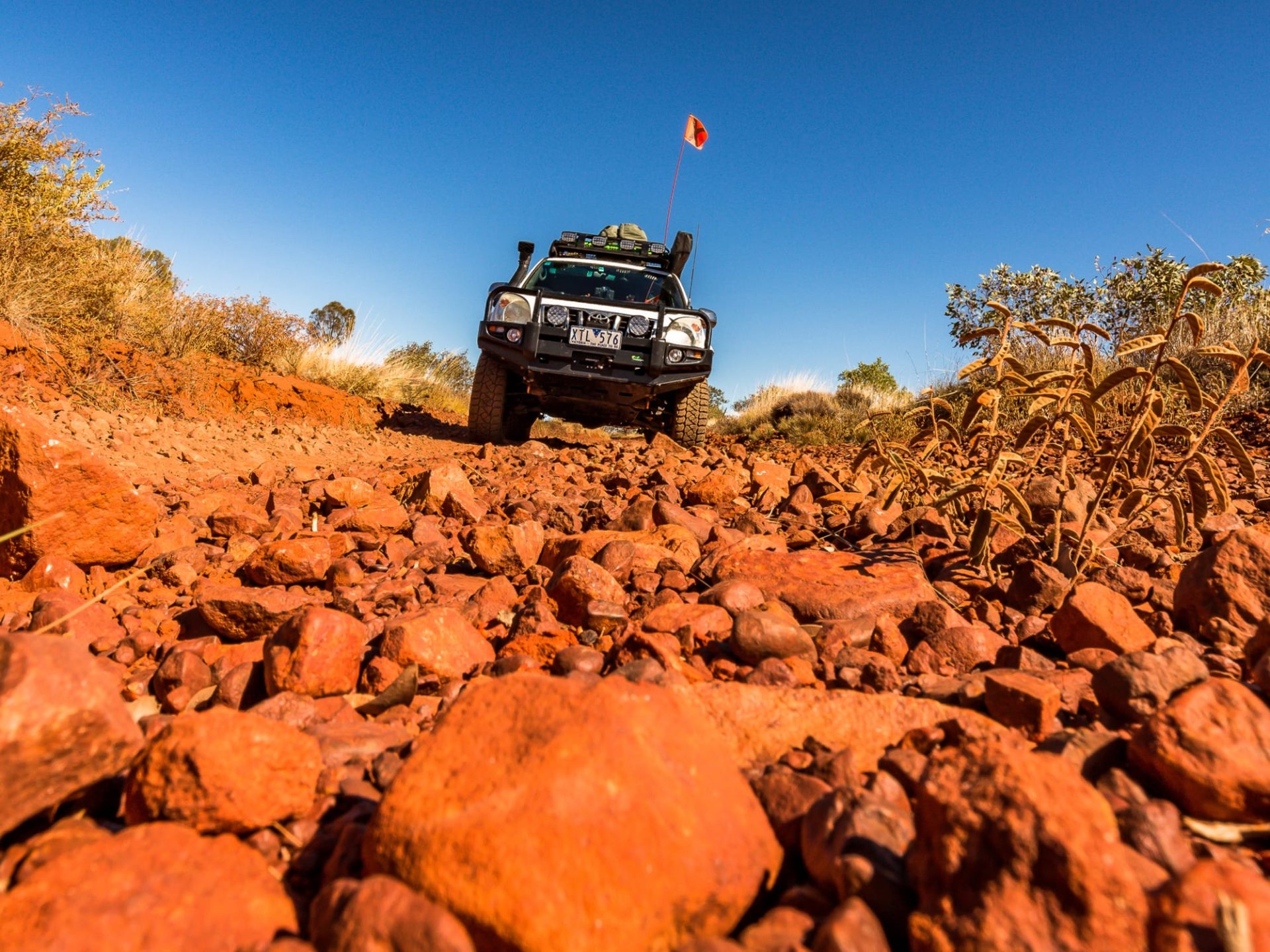Desecrating ancient art in a sacred place.
Words and Images by Glenn Marshall
Mutawintji National Park is one of the most culturally significant places in New South Wales. For thousands of years, it has been a place where large gatherings take place, to renew obligations to the land, for ceremonies, to trade, settle disputes and teach people the various stages of gaining knowledge, responsibility and wisdom. When Europeans moved into the area for its good pastoral conditions, the area could no longer be used for ancient traditions. William Wright explored this area from Kinchega and led Burke and Wills through the area on 24th October 1860.
CLICK HERE TO READ THIS ARTICLE IN OUR FREE DIGITAL MAGAZINE
The Silver City Highway from Milparinka was one of constant change – bitumen one minute, gravel the next; it was a challenge to keep my tyre temperatures down as I was still running reduced pressures. Speed and reduced pressures cause a heat build-up that breaks down the components of the tyre, possibly to the point where the sidewall gives way and you suffer a blowout. I was able to keep check via my TPMS (tyre pressure monitoring system). I turned off the highway onto Henry Roberts Road towards White Cliffs where I was met with the unusual site of an emergency runway forming part of the road. Used by the Flying Doctor, it’s a safer option than attempting to land in a paddock.
I was amused and intrigued by the remarkable metal sculptures situated in various places along the track. Following the signs, Kayrunnera Road became Mutawintji Road and led me directly to the park. A Visitors Centre welcomes you, although it is unmanned. There are flushing toilets, a BBQ, rubbish bins, a pay phone and for something completely different, a book exchange. The Homestead Creek campground is the only place available to camp and has a good range of facilities (when working) including shelters, free BBQs, flushing toilets and solar-heated showers. There are firepits in several of the designated sites, but all wood must be brought in. Once I’d rolled out the swag and ate some lunch without swallowing any flies, I decided to go for a drive along the Old Coach Road.
On the main route from Broken Hill to White Cliffs, the Rockholes Hotel was a real drawcard, especially once the underground cellar and dining room was constructed. A form of dumb waiter was used to lower the food from the kitchen down to the patrons and was very popular. The 10km drive is easier these days in our air-conditioned 4WDs. The Old Coach Road concludes at a sandy creek bed dotted with river red gums. From here you can walk approximately 3km east on an unmarked trail to Split Rock, a spectacular rock formation.
There are numerous other walks within the park, depending on your capabilities and the weather; early mornings are the best times most of the year. The Western Ridge Walk (Class 4) is a 6km return that takes you up onto the ridge and provides spectacular views across the desert plains and Byngnano Range. This is a popular walk for capturing sunsets, but it is advisable to carry a torch so that you can return to camp safely.

The Homestead Creek Walk is a loop trail that encompasses several other walks. Beginning at the campground, follow Homestead Creek to the day use area. Following the trail up into the gorge, you’ll reach Thaaklatjika Mingkana (Wright’s Cave) and view a range of Aboriginal art on the raised boardwalk. You will also be able to see where in 1859 (LIX) Wright painted his mark over an ancient painting on one of his expeditions into the region for reasons only known to Wright himself. He left the second mark on his return in 1862 (LXII).
Advancing further into the gorge, following the white markers will guide you along the Rockholes Loop Walk. This is rated as Class 4 due to the steepness of the track. After passing a series of rock holes you will discover views along Homestead Creek and the range. Upon reaching the track junction, turn left and follow the red markers along Homestead Gorge (Class 3), past rock engravings, and if you’re lucky there will be a waterhole at the end of the track.
Retrace your steps and head left again, watching for green markers, and be rewarded with breathtaking views of the valleys and gorges that cut through the Byngnano Range (Class 4) before returning to the Homestead Creek day use area. My favourite is the Mutawintji Gorge walk. This 6km return walk is more to my level of fitness and rated as Class 3. Allow a good three hours to enjoy the trek into one of the most picturesque gorges you will come across. It concludes at a waterhole surrounded by the rusty red walls.
A tour of the Mutawintji Historic Area is highly recommended as it is a great way to view rock art that is over 8000 years old. You will learn about the markings left by the local Aboriginals to alert others of water or food. You will also be privileged to see some amazing ochre paintings and stone engravings, all telling a story. You can only gain access with a licensed tour operator or with the Mutawintji Local Aboriginal Land Council’s Heritage Tours. Tours only operate a couple of days a week, but you can book via the pay phone at the Visitors Centre.

As the day drew to a close, lightning flashed on the horizon, all show no action as the soil cried out for relief with some water from the sky. I was awoken by a crash! Powerful winds blew through camp, sending camping gear flying. Head torches popped up everywhere as people rescued what they could find. Spots of rain barely settled the flying dust. It was fun trying to bash the awning pegs back into the parched earth in the dark. At dawn, it was still, not a breath of wind at all. I packed and hit the road out.
Kangaroos melded with the saltbush, making it difficult to spot them. Creeks lined with river gums, white and green against the burnt orange. I had an interaction with a crazed emu as he tracked to run across in front of me. As I was slowing, our paths almost met and we had a chance to look into each other’s eyes. I yelled “BOO!”, and he veered away, a weird look on his face. And as I aired up my tyres upon reaching the Silver City Highway, the Barrier Ranges stood before me and I knew that this was the end of another cracking adventure.
DESTINATION DETAILS
• WHERE: Mutawintji National Park is located 130km north west of Broken Hill and once off the Silver City Highway it is a good dry weather road. Expect the roads to be closed after rainfall.
• CAMPING: Homestead Creek Camping Ground has designated sites, some with firepits. There are toilets and showers, free gas BBQs, bins and shelters. At $6 per night, it is a bargain, but the place is looking worse for wear at the time of writing and the only facilities that worked were the toilets. My tip is to head down to the Visitors Centre to cook/eat – fewer people and fewer flies and you can even read a book while waiting for your food to cook.
• SUPPLIES & FACILITIES: Broken Hill has everything you need in the way of fuel and supplies but carrying extra is recommended as this is remote country and you may be stranded if it rains.
• TRIP STANDARD: Hema Explorer rates the tracks AWD, and in the dry they are. If it rains, the roads may be closed. Carry an air compressor as dropping your tyre pressures will help the tracks, ease the ride and reduce the chances of punctures.











